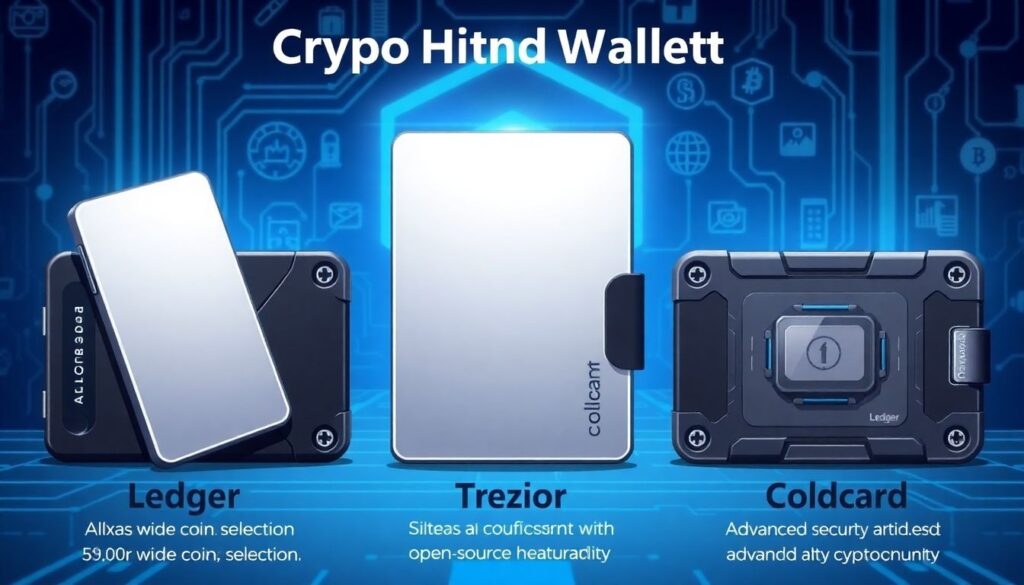Why Choosing the Right Hardware Wallet Brand Matters

In the world of cryptocurrencies, safeguarding your private keys is non-negotiable. Software wallets, while convenient, remain vulnerable to malware and phishing attacks. That’s why hardware wallets have become a cornerstone of crypto security. But with multiple brands on the market—each boasting unique features and philosophies—selecting the right one can be a minefield. This guide breaks down real-life scenarios, under-the-radar insights, and expert hacks to help you make a confident decision.
Real-World Cases: When Brand Choice Made or Broke Security
Consider the 2020 case involving the Ledger data breach—not of its wallet security, but its customer database. While Ledger devices remained secure, the incident exposed the importance of how companies handle user data. In contrast, Trezor’s open-source approach has drawn praise for transparency, but it has also made the brand a frequent target for supply chain attacks due to its lack of a secure element chip.
Another example is the case of users who lost access to their funds due to firmware updates on lesser-known brands. These companies often lacked robust customer support or clear recovery protocols, leaving users stranded. These stories underscore that choosing a brand is not just about features—it’s about long-term reliability and ecosystem trust.
Not-So-Obvious Factors to Consider
Most buyers focus on surface-level specs: coin support, Bluetooth connectivity, or touchscreen interfaces. But there are deeper variables worth weighing:
– Secure Element vs. Open Source: Brands like Ledger use a secure element (SE) chip to isolate private keys. Trezor avoids SE due to its closed-source nature, favoring full code transparency. Which is safer? It depends on your threat model.
– Firmware Update Policy: Does the brand force updates that might brick older devices or change functionality unexpectedly?
– Recovery Seed Handling: Some wallets now offer Shamir Backup or encrypted backups, reducing the single point of failure from a traditional 24-word seed.
These nuances often tilt the balance when choosing a wallet for serious long-term storage.
Alternative Approaches to Cold Storage
While hardware wallets are the gold standard, they’re not the only way to store crypto offline. Advanced users sometimes opt for air-gapped devices, like an old smartphone flashed with GrapheneOS and used solely for signing transactions. Others build DIY hardware wallets using microcontrollers and open-source firmware (e.g., SeedSigner or Specter DIY).
Each alternative comes with trade-offs:
– Air-gapped devices: High security but require more technical skill.
– Paper wallets: Easy to create but fragile and risky if not generated properly.
– Multisig setups: Excellent for institutional-grade security, though more complex to manage.
If you’re managing significant capital or institutional funds, exploring these alternatives might be worth your time.
Pro Tips and Wallet Selection Hacks

Crypto veterans often go beyond product specs when choosing a brand. Here are some insider tricks to refine your decision-making:
– Check GitHub activity: A wallet’s development repo reveals how actively it’s maintained. Stagnant code might mean security holes.
– Evaluate community support: Brands with active Telegram or Reddit communities tend to offer better peer support and documentation.
– Test with minimal funds: Before committing large sums, run a full test cycle: initialize, send, receive, recover from seed.
And a few more advanced hacks:
– Use a decoy wallet with plausible deniability features (e.g., hidden wallets in Coldcard).
– Store backup seeds in metal capsules like Cryptosteel to protect against fire and water damage.
– Split your holdings across different brands to reduce single-point-of-failure risk.
Final Thoughts: There’s No One-Size-Fits-All

When choosing a crypto hardware wallet brand, the best option depends on your technical ability, threat model, and use case. Ledger offers sleek design and wide coin support but comes with proprietary elements. Trezor appeals to open-source purists but may lack certain security hardware. Coldcard is beloved by Bitcoin maximalists for its air-gapped design, but it’s not beginner-friendly.
Ultimately, the smartest approach is to define your needs first—then match them to a brand that aligns with your security philosophy. In crypto, convenience and control are always in tension. Your wallet should reflect where you stand on that spectrum.

